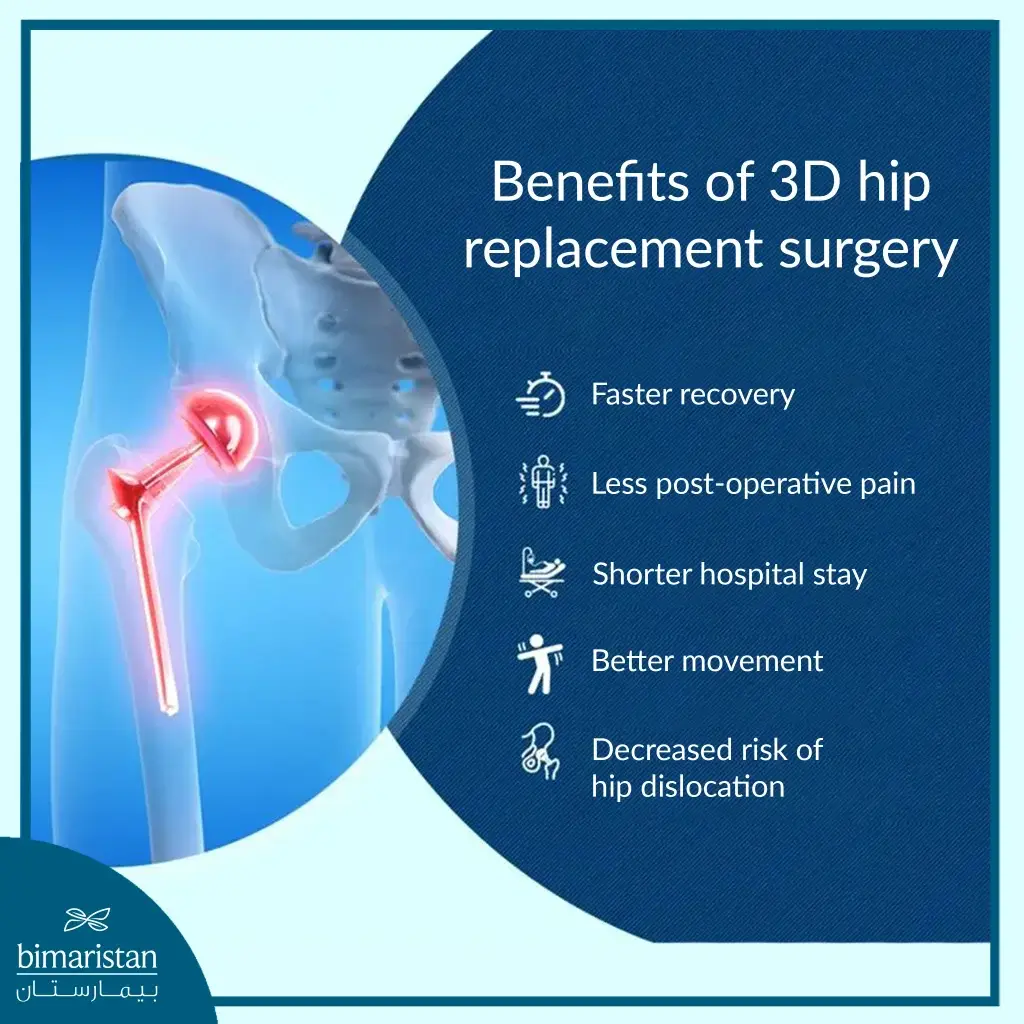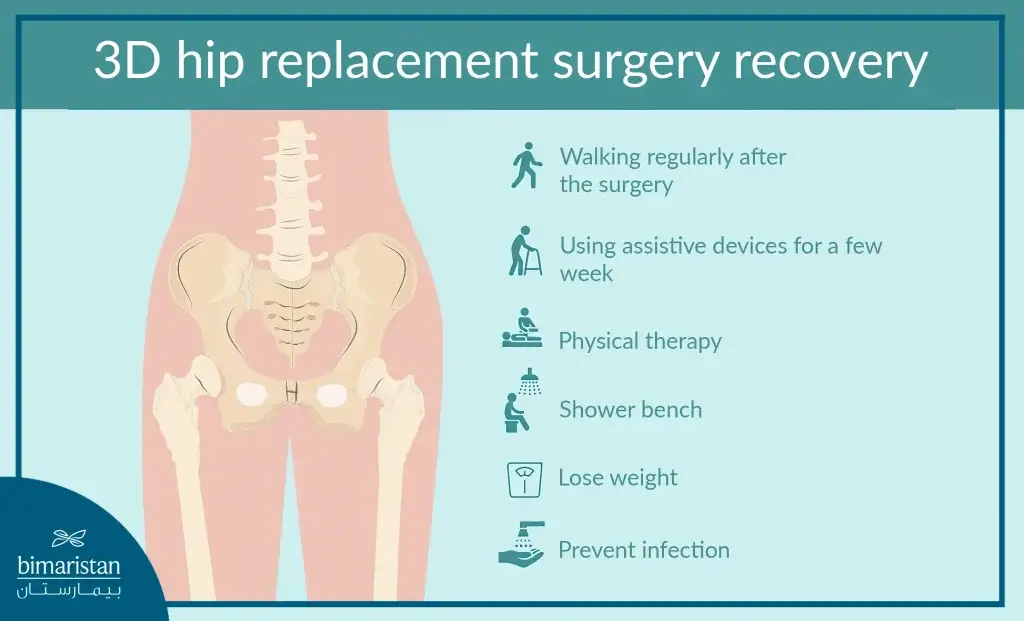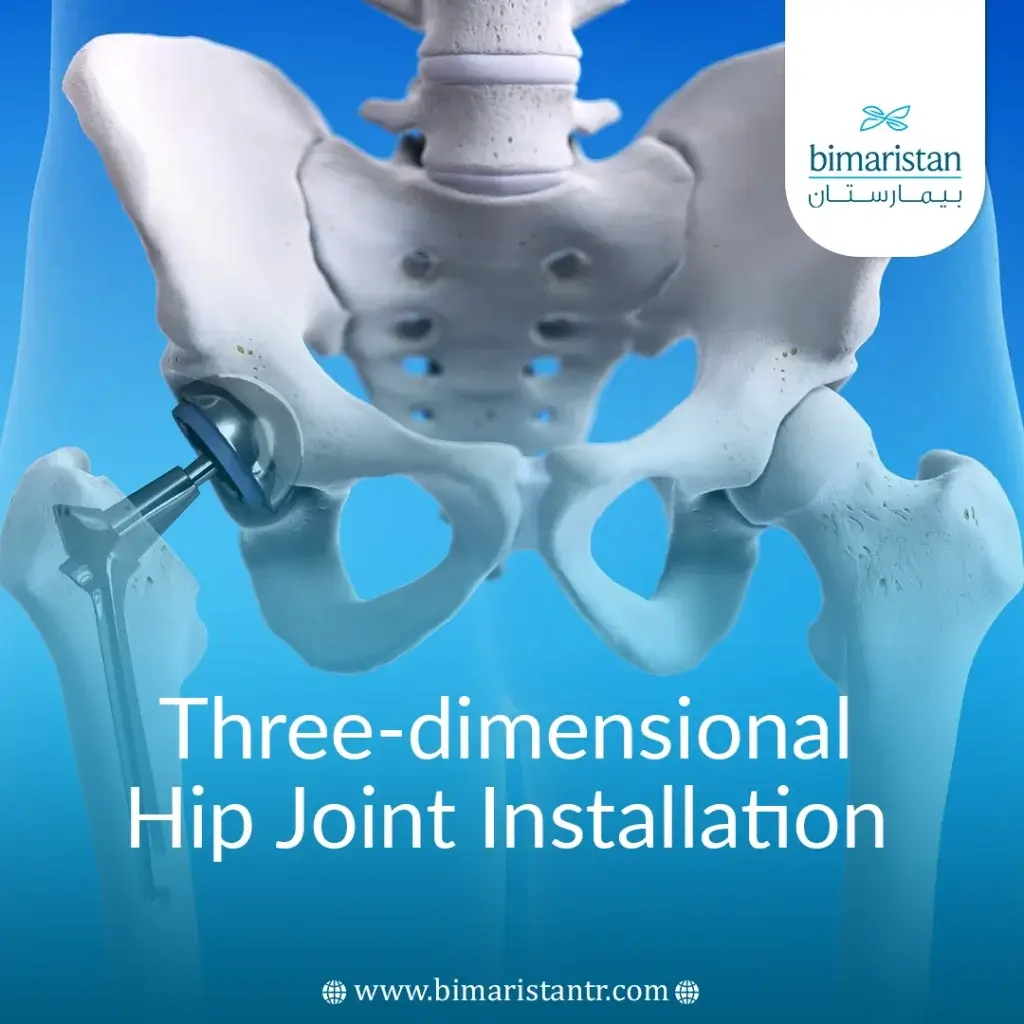The Use of 3D Printing Materials has Become More Common in Education and Research. 3D printing technology helps us achieve two main goals in orthopedic surgery: producing 3D anatomical models for surgery planning and simulation and creating anatomically customized prosthetics for each patient.
Statistics indicate that the number of three-dimensional hip joint installation surgeries is continuously increasing, with over 450,000 performed annually in the United States alone. With aging and the increasing prevalence of conditions such as arthritis, osteoporosis, and hip fractures, the demand for hip joint replacement surgeries is expected to rise. Some studies on 3D hip replacement techniques have shown that they can reduce surgical complications by up to half compared to traditional methods, significantly enhancing patients’ quality of life.
What is Three-dimensional Hip Joint Installation?
Hip replacement surgery, or hip arthroplasty, is a surgical procedure in which the orthopedic surgeon removes the affected parts of the hip joint and replaces them with new artificial parts. These artificial parts mimic the function of the natural hip joint using 3D printing technology, helping to alleviate pain and loss of movement caused by the injury.
Advantages of Three-dimensional Hip Joint Installation
The 3D hip joint replacement procedure has many advantages and benefits that distinguish it from other traditional operations. Although it is not very common until now, the use of customized 3D-printed implants is in the near future for hip joint replacement surgeries. Many distinguished surgeons expect that most of their hip replacement components will be 3D printed. The advantages of 3D hip joint replacement include:
- Custom Fit, also known as patient-matched devices: The implants are designed using 3D models from CT scans and X-rays of the patient’s actual hip structure, providing an ideal fit and promoting rapid healing. These joints can be made from metallic materials like titanium and 3D-printed cobalt-chrome alloys, as well as non-metallic options like ceramics and special plastics.
- Less Invasive Placement: The improved fit of 3D-printed components works well with smaller incisions and less invasive surgery. For some minimally invasive procedures, the socket can be pressed into place instead of hammered, resulting in less damage and faster recovery times.
- Reduced Risk of Dislocation: The components are designed according to the patient’s anatomy and specific range of motion, reducing the risk of dislocation after surgery, especially for individuals with complex procedures.
- Less Need for Future Joint Replacement Surgeries: Thanks to the custom components used in three-dimensional hip joint installation surgeries that integrate with the patient’s bones and soft tissues better than ever before, the joint is expected to last 15-20 years or more before needing to be replaced again.

Candidates for Three-dimensional Hip Joint Installation
A doctor may recommend hip joint replacement, especially with a three-dimensional hip joint installation, in cases of severe pain, inflammation, and damage in the hip joint, such as:
- Osteoporosis (most common)
- Rheumatoid arthritis
- Osteonecrosis (avascular necrosis)
- Injury such as a hip fracture
- Tumor in the hip joint
- Osteoarthritis
How is Three-dimensional Hip Joint Installation Surgery Performed?
Hip replacement surgery is an advanced procedure requiring a lot of expertise and studies tailored to each patient’s specific condition, depending on the patient’s health status and the severity of the injury. However, there are several common steps shared among most patients, including:
- An intravenous line and possibly a urinary catheter should be inserted in the hand or arm.
- Administering general anesthesia, epidural anesthesia, or spinal anesthesia based on what is suitable for the patient’s health condition, as determined by the anesthesiologist and the surgeon.
- The surgeon will remove the femoral head, open the upper part of the femur, and insert the femoral stem of the ball support, attaching the replacement head to the top of the femoral implant.
- The damaged cartilage is removed from the acetabulum (hip socket), the new cup is attached, and the leg is bent to ensure proper performance.
- Closing the tissue layers with absorbable stitches eliminates the need to remove the stitches after hip replacement surgery.
- Finally, the patient is transferred to a private room to be monitored for improvement and to assess the surgery’s impact on their health.
Recovery After Three-dimensional Hip Joint Installation
The recovery period after a three-dimensional hip joint installation surgery depends on several criteria:
- Type of surgery performed: Whether a total hip replacement, which takes about 3 to 6 months for recovery or a partial hip replacement, which has a shorter recovery period.
- Size of the surgical incision: Smaller incisions result in shorter recovery periods. One of the advantages of 3D hip joint replacement is that the surgery is less invasive, meaning a smaller incision.
- Type of anesthesia: Recovery might be faster with spinal anesthesia than with general anesthesia.
- Age: Younger patients have shorter recovery periods than older patients.
- General health of the patient: Recovery is quicker for patients with good overall health than those with accompanying health conditions and diseases.
- Commitment to post-surgery rehabilitation program: Strict adherence to the surgeon’s instructions significantly aids the recovery process.
Post-Operative Instructions for Three-dimensional Hip Joint Installation
Doctors usually recommend several tips and instructions that greatly help regain many hip joint-dependent activities and facilitate recovery. These instructions include:
- Walking: The patient should walk as much as comfortably (at least 2-3 times a day), trying to walk a longer distance each time. In most cases, the patient will need a walker or cane for walking during the first 3-6 weeks. They should gradually try to give up the cane when they feel less dependent on it, eventually stopping its use altogether.
- Careful movement: Avoid bending at the hip more than 90 degrees, sleep with a pillow between the legs, avoid rotating the toes inward, avoid rotating at the hip, and avoid crossing the legs. All this should be done by sitting on high chairs and using a raised toilet seat to prevent hip dislocation. These instructions should be followed until the next doctor’s visit.
- Pain control: After returning home, the patient can take painkillers prescribed by the doctor. However, it is generally preferred to minimize the use of painkillers as much as possible due to their side effects if used excessively.
- Exercises: Including side lifting while standing or lying on the side, hip extension (moving the hip backward) while standing, and limited straight leg lifts (do not use weights for this).
To monitor the response, the patient should see the specialist within six weeks or less after the surgery.

Cost of Three-dimensional Hip Joint Installation Surgery in Turkey
The cost of three-dimensional hip joint installation surgery varies depending on the patient’s health condition, the type of surgery performed, and many other factors. However, it usually ranges between $12,000 and $14,000 under the care of the best doctors in Turkey in the most advanced hospitals. Compared to the high costs of such surgeries in European countries and the United States, Turkey is considered a preferred option for many patients worldwide.
Success Rate of Three-dimensional Hip Joint Installation Surgery
Numerous studies and medical reports have shown that hip joint replacement surgery has a high success rate, ranging from 90% to 95%. This rate is influenced by several factors, including the surgeon’s skill, the technique used in the surgery, and post-operative care.
3D hip joint replacement surgery has made significant progress in orthopedic and joint surgery, offering custom-made prosthetic joints that greatly improve surgical outcomes. It provides faster recovery thanks to precisely designed implants that fit each patient’s anatomy through radiographic imaging and 3D modeling. These 3D-based surgeries reduce risks associated with traditional implants, such as dislocation, and result in fewer post-operative complications. With significant advancements in medicine and 3D joint manufacturing technologies, there are great promises in replacing traditional hip joint replacement surgeries with those based on 3D technologies.
Resources:


